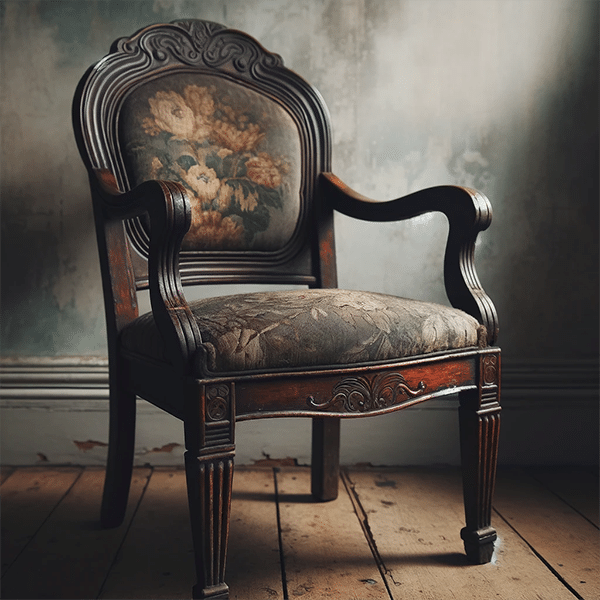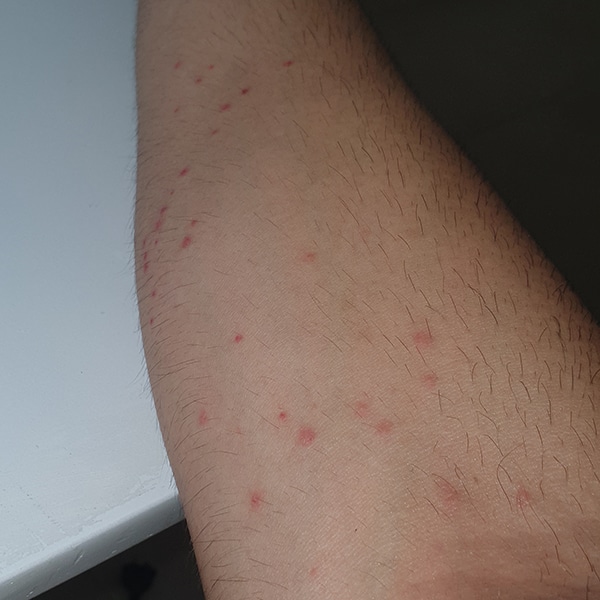
In the article
We’ve all heard of them but we never think we’re going to be the victim of sleepless nights, itchy bites, and even full-blown anxiety. If these symptoms do show up, you’re likely going to ask, why did I get bed bugs? We’ve put together this blog to illuminate the early signs of bed bugs, many of their sources, and some effective ways to deal with them permanently.
The Sneaky Invaders
Before breaking down their many sources, it’s important to properly understand what these insects are.
These critters are small, crafty little insects that subsist on a diet of human blood. These nocturnal creepy crawlers excel in hiding all over bedrooms and homes, making them challenging to detect. They can typically be found where people sleep, as they offer the easiest meal ticket. This means searches are generally focused on beds, mattresses, and sofas, they can be a real nuisance in homes.
How do they invade homes?
These bugs are adept hitchhikers, meaning their aimless travels will sometimes lead to you. They can easily latch onto luggage, clothing, and other personal belongings without any invitation, eventually finding their way into your home. Once they’re in, they won’t leave politely, swiftly finding hiding spots and beginning to multiply. Their small size (more or less invisible from a distance) and flat bodies enable them to fit into tiny crevices, often remaining unnoticed until their population has significantly increased.

Adult Bed Bug
Travelling Companions: Picking up Bed Bugs
As stated before, bugs are adept hitchhikers, meaning they can commonly be picked up in transit.
Common ways they hitch a ride
Travelling from place to place is a frequent way to pick up bugs that would usually be foreign to your bedroom. These pests often reside in shabby hotels, hostels, and other budget accommodations, where they can smoothly move from room to room and all the way into a traveller’s luggage.
Preventing bed bug infestations while travelling
To avoid bringing uninvited guests home, it’s vital to thoroughly inspect hotel rooms before settling in, focusing on the bed and furniture. On arrival, make sure to keep your luggage off the floor or furniture, preferably on a luggage rack, and inspect your belongings before repacking. Once home, diligently wash all your clothes in hot water and vacuum your suitcase thoroughly.
Unwanted Souvenirs: Secondhand Furniture
There are countless reports of the bugs in furniture, especially when sourced secondhand.
Risks of secondhand furniture
The term ‘flea market’ is often more than just a name! Used furniture, particularly beds (big surprise) and sofas, can be a covert yet common source of the creepy crawlers. The insects may reside within the fabric, crevices, or hollow insides of furniture, ready to infest a new home and feast on the owner.
Tips for safe furniture shopping
If you feel the need to purchase secondhand furniture, whether for budgetary reasons, taste, or simply the appreciation of a good deal, inspect it (and its source if possible) thoroughly for signs of bed bugs and, if feasible, treat the furniture with non-toxic bed bug treatments before bringing it into your home. Consider leaning away from upholstered furniture, as it offers more hiding spots.
Hitchhikers in Your Daily Life: Public Spaces
While they spend their nights hiding, there are plenty of public places where the bugs can be found.
Bed bugs in public spaces
These bugs are most commonly associated with sleeping areas, but they are also known for setting up camps in places like cinemas, public transport, and even offices. Once you sit down, they can easily latch onto bags, coats, and other items unnoticed.
Precautions in public areas
To minimise the risk of bringing back a few tiny unwanted guests home from public spaces, be mindful of where you set your belongings down. Try to avoid putting bags or coats on the floor or upholstered furniture in public areas. Regularly inspecting and cleaning your belongings can also be a vital step in detecting and preventing bed bug infestations.
The Unseen Carriers: Clothing and Belongings
While their name suggests that they live in furniture, it’s common to find bed bugs hiding in clothes.
Bed bugs on clothing and personal items
Your clothing and personal items can inadvertently become carriers of the bugs, especially if you come into contact with any of the other sources in this article. These pests can easily cling onto fabrics and items when you visit infested areas or find yourself close to infested materials.
Mitigating the risk
To mitigate this risk, be vigilant about where you choose to visit, generally avoiding places known for bed bug infestations. Upon returning home, especially from overnight trips or stays in hotels, thoroughly launder your clothing in hot water and detergent, inspecting your luggage and personal items carefully for any signs of an infestation.
Unveiling the Mystery: Signs of a Bed Bug Infestation
So now we know where to find them, it’s important to recognise the early signs of the bugs, so infestations can be handled as soon as possible.
Telltale signs of bed bugs
The most common signs include small, rust-coloured stains on bedding from their excrement (as if they weren’t rude enough already!), tiny blood spots on sheets from bed bug bites, as well as burst bugs that you’ve rolled onto in your sleep. In larger infestations, rooms can be filled with a sweet, musty odour. In terms of your person, you can also notice small, itchy bite marks on your skin upon waking.
Why early detection is crucial
Early detection is key because these bugs reproduce quickly, with their populations growing exponentially in no time. Identifying an infestation in the early stages makes it much easier to contain and eradicate, preventing a spread throughout your home.

Bed Bug Bites
Getting Rid of the Unwanted Guests: DIY Solutions
In the earliest stages, taking on a bed bug infestation can be completed in a DIY fashion.
DIY bed bug treatment options
There are several DIY methods for preventing and treating bed bug infestations, including regular vacuuming, washing bedding and clothing at high temperatures, and using bed bug-proof mattress encasements. Knowing how to treat bed bugs naturally, often needs to be combined with more aggressive treatments for full effectiveness.
Eco-friendly and non-toxic solutions
For those seeking environmentally conscious options, many non-toxic bed bug products are available. These solutions, such as using diatomaceous earth, steam, and physical barriers, can be highly effective, offering a safer alternative, especially in homes with babies, children and pets.
Calling in the Pros: When to Seek Professional Help
In most cases, it’s important to remember that you can handle the infestation yourself – more often than not pest control is ineffective.
Recognising professional pest control
If you’ve tried various home treatments without consistent success, or if the infestation is widespread, it can be tempting to call in professional pest control services. This is more common in multi-unit buildings like apartments, where the critters can easily spread to other units.
The limitations of professional bed bug treatment
Professional pest controllers use more potent treatments and specialised equipment – often a combination of chemical and non-chemical methods, however, these methods are generally dangerous and ineffective. Due to using powerful chemicals, they generally spread infestations around, rather than eliminating them for good, while making homes inhabitable to humans for some time.
Staying Bed Bug-Free: Prevention and Maintenance
Now you know how to find at treat infestations, it’s important to consider prevention and maintenance.
Preventative measures
Preventing bed bugs from entering your home is the most effective way to stay bed bug-free. Regularly inspecting second-hand furniture, being cautious in high-risk areas, and maintaining a clean environment significantly reduce the risk.
Maintaining a bed bug-free environment
Continued vigilance is key. Regularly washing and heat-drying fabrics, vacuuming frequently, and inspecting your living spaces regularly can help detect any new infestations. Consider using bed bug-proof mattress covers and other barriers as a preventative measure.
Conclusion: Taking Control and Sleeping Easy
Dealing with bed bugs is challenging, but understanding their habits and signs of an infestation are crucial first steps. Remember, these pests come from almost anywhere, so early detection is a solution to tackle infestations effectively, with each working differently depending on the severity of the infestation.
Be proactive
Being proactive is the best defence. This means regular inspections, maintained cleanliness and preventive measures, like eco-friendly treatments and bed bug-proof covers. If an infestation occurs, act quickly, using DIY methods above all else.
Rest easy
By being vigilant and proactive, you significantly reduce the risk of a bed bug infestation, protecting your home and ensuring peace of mind. Remember, the sooner you address the problem, the easier it is to manage.
For more info on bed bugs, check out our blog today.
Are You Looking for an Organic DIY Treatment for Bed Bugs?
Watch Our DIY Treatment Video For An Ensemble Bed
Watch Our DIY Treatment Video For A Bed with Slats
If you’ve enjoyed our blog, ‘Why Did I get Bed Bugs,’ then you might like to read our blog, ‘Bed Bugs in Ambulances.’



Leave a Reply